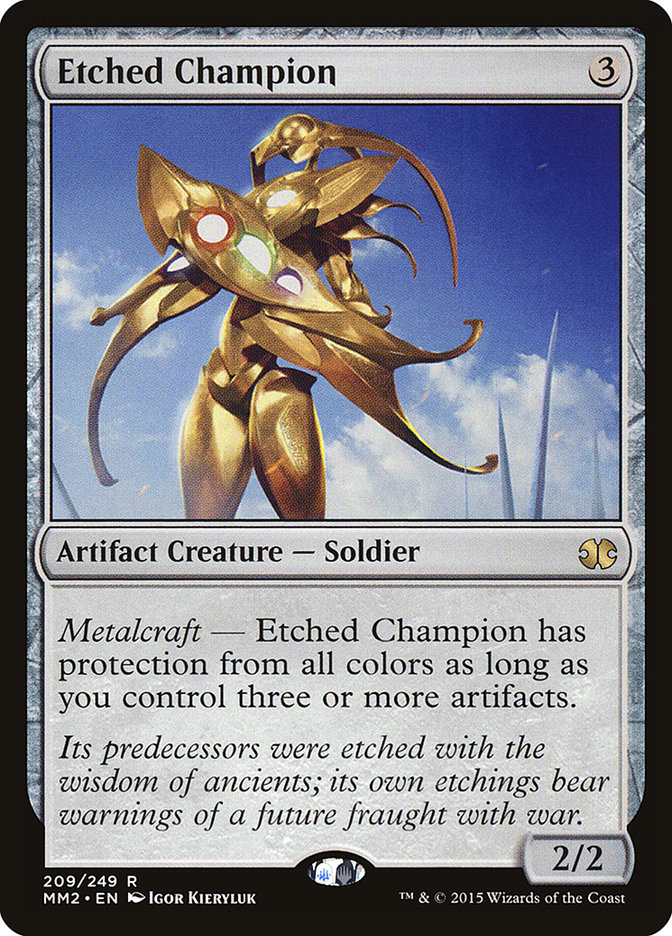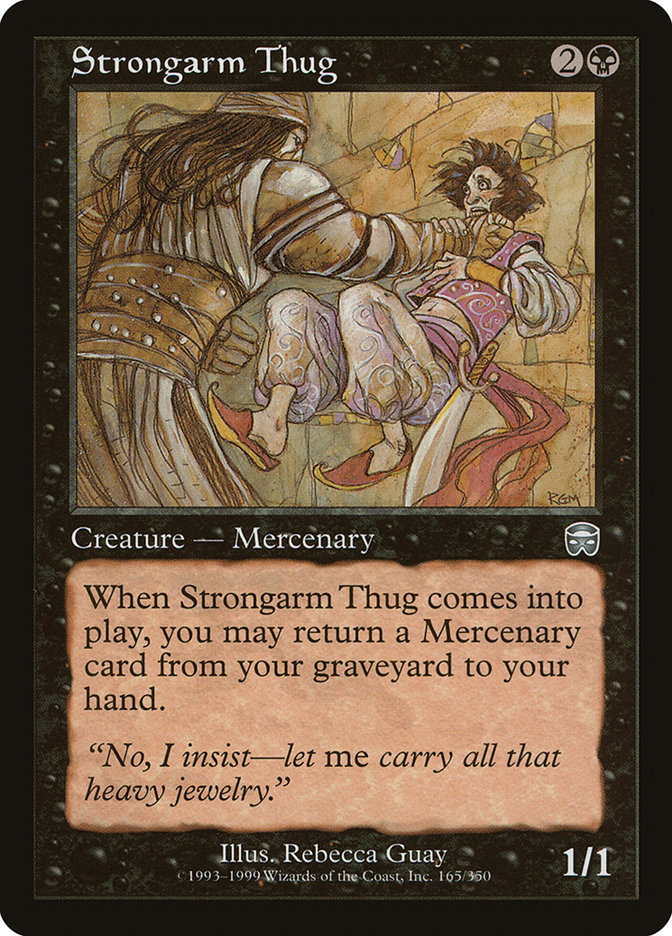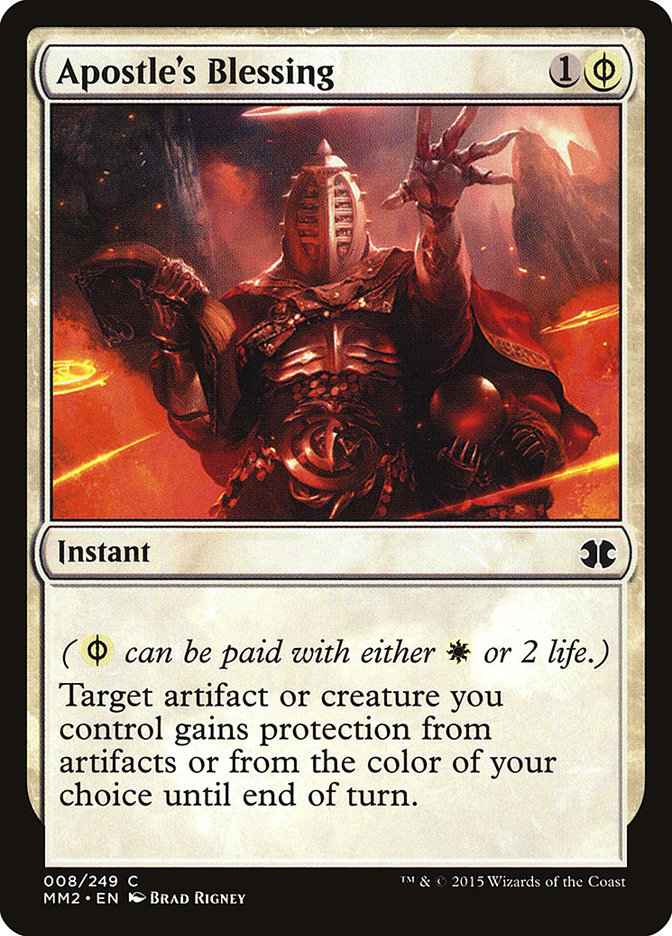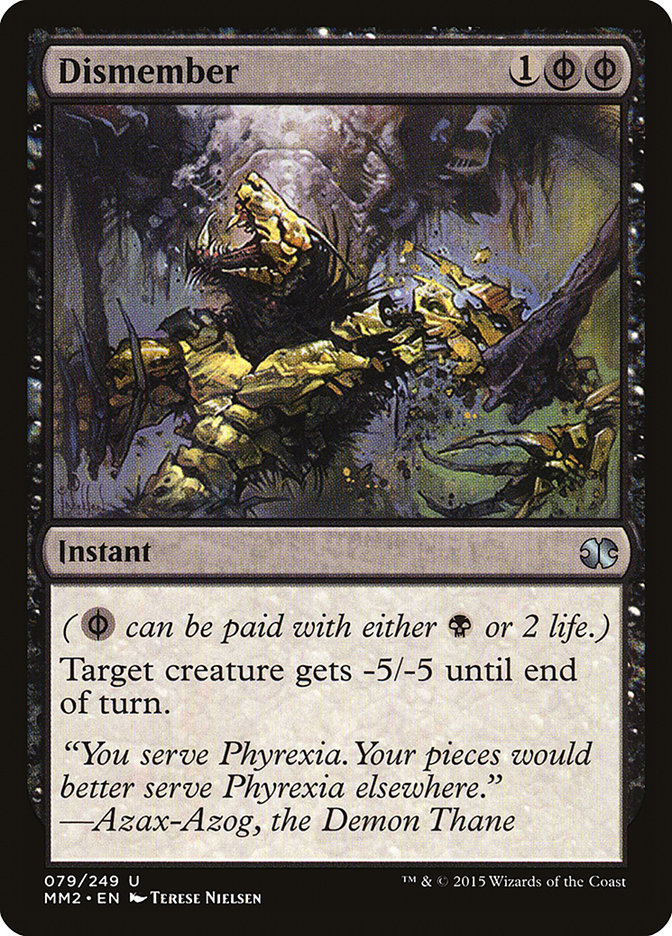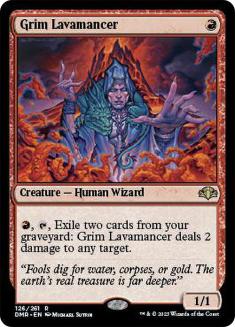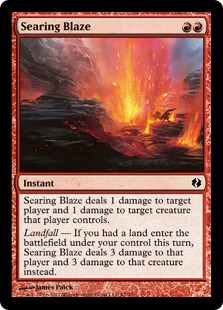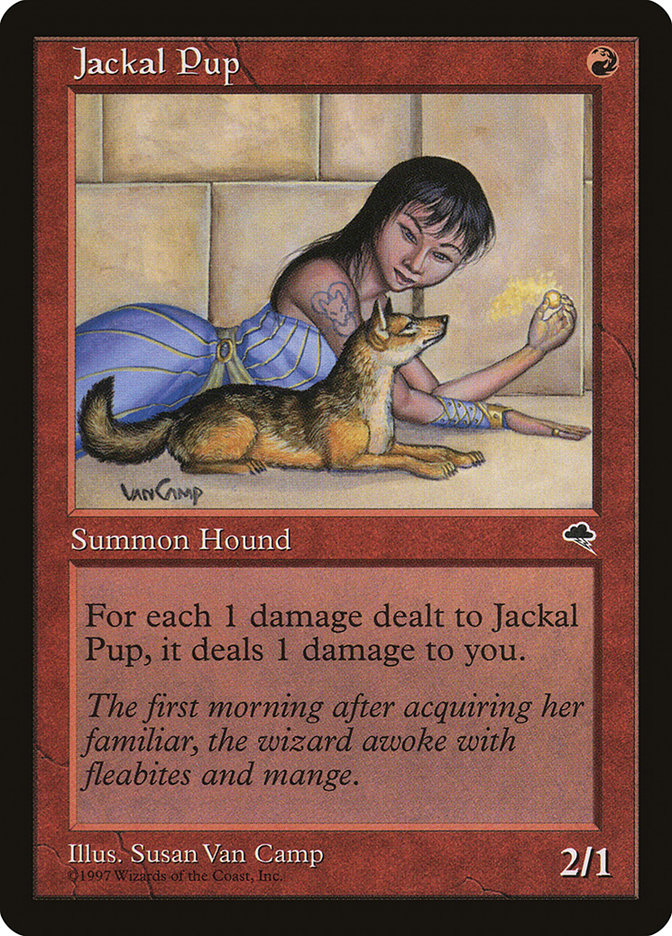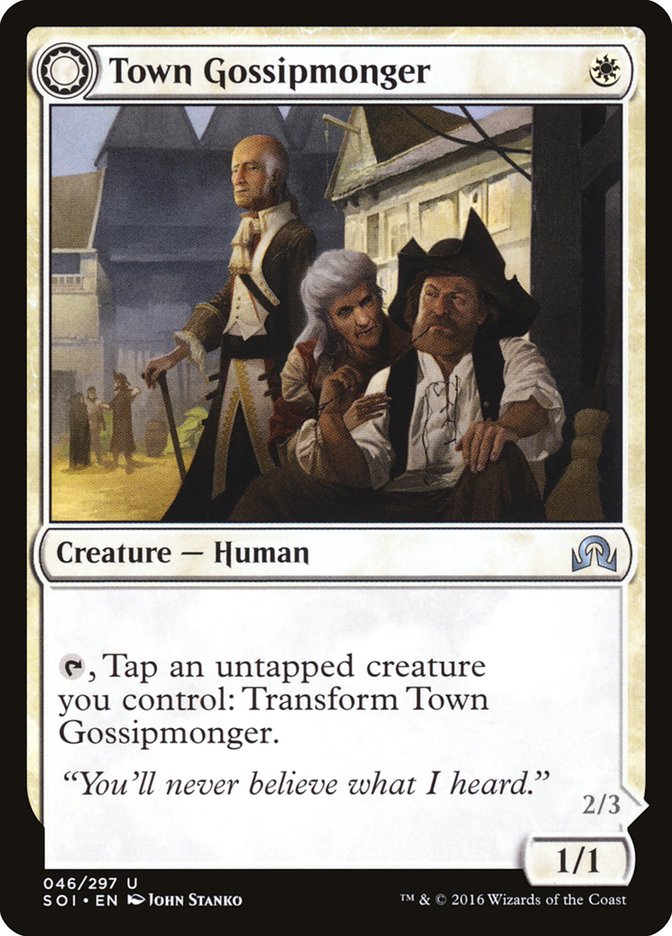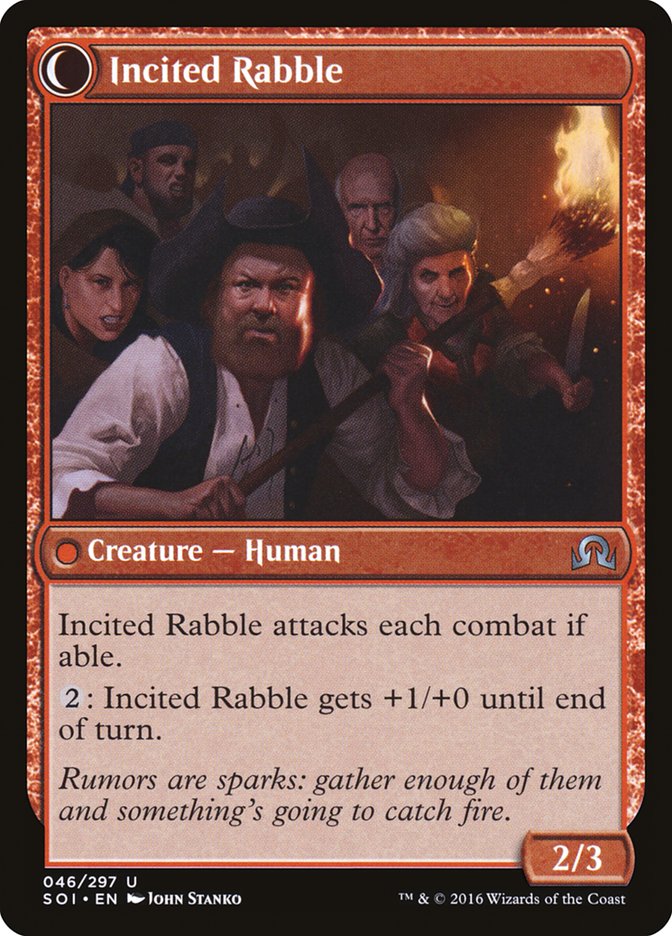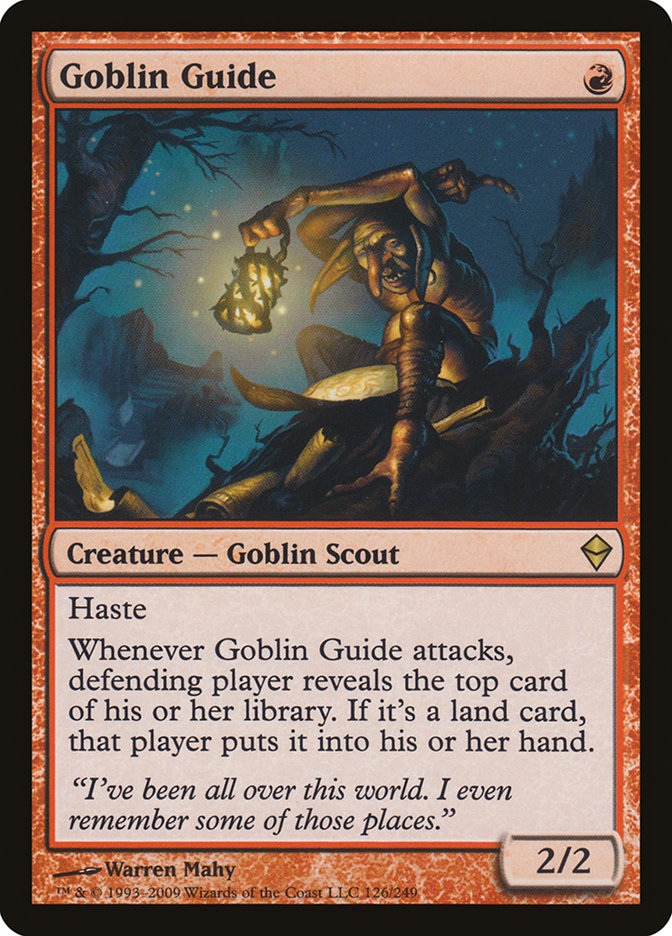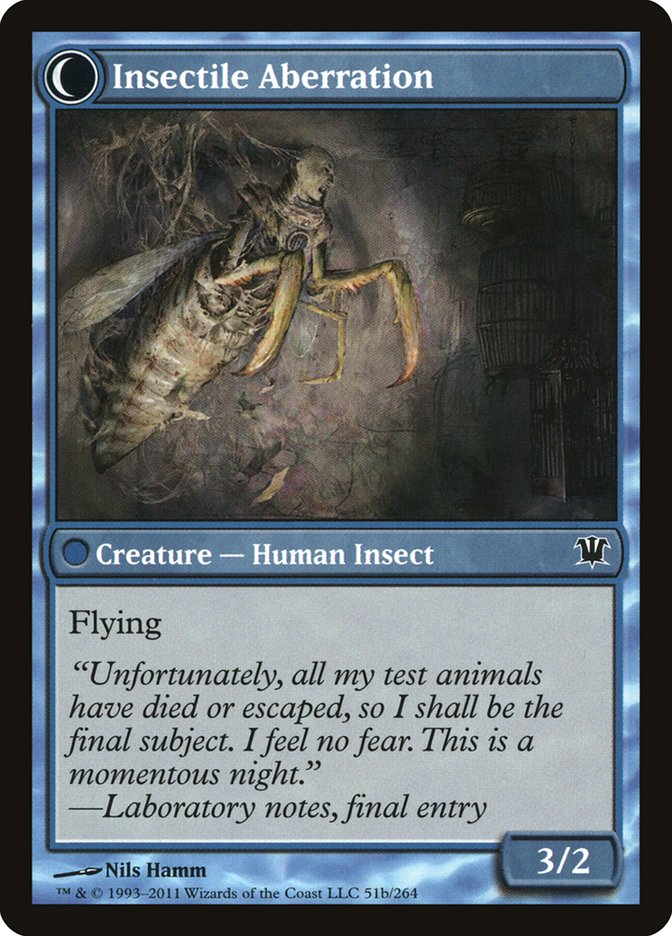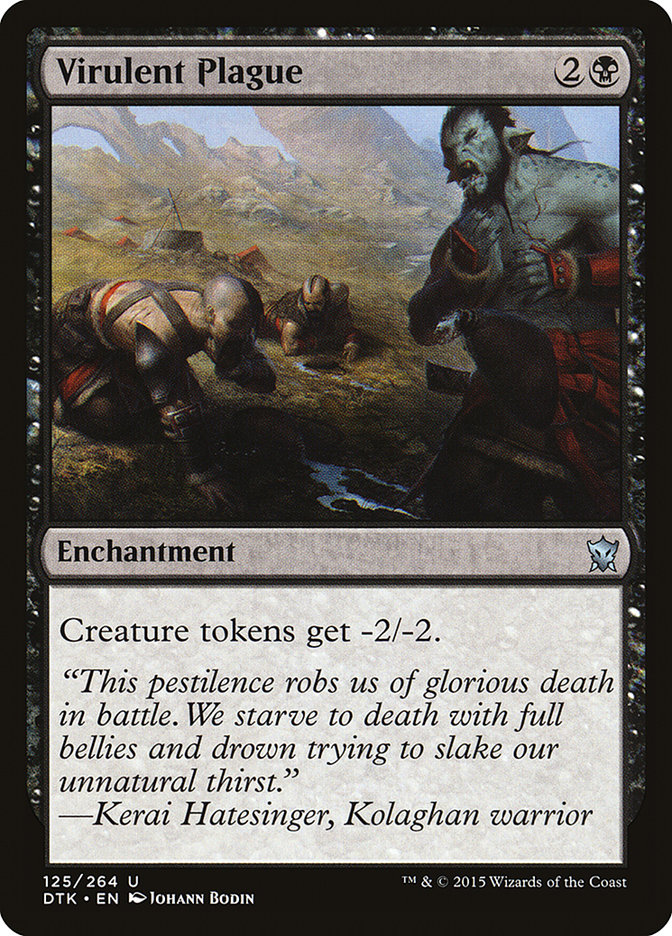There is a fabulous quote attributed to David Price, champion of the second Pro Tour Los Angeles which has one of those nuggets of wisdom that really sticks with you.
“There are no wrong threats, only wrong answers.”
In truth, this isn’t the actual David Price quote, though it is quite close to his original quote. His original statement is even more chock full of wisdom, from an interview by Norwegian Magic player and early coverage giant Kim Eikefet:
“People like control because they think it shows that they’re good Magic players. Active decks, on the other hand, produce threats, and control decks must have the right answer to the right threat. If not, they’re in trouble… while there are wrong answers, there are no wrong threats.”
Perhaps this quote comes to mind because I’m in New York City, the place where I first truly met David Price, and where I worked with Michael Flores, who championed this quote of Price’s and really promoted the idea. Perhaps I’m thinking of it because of my recent experiences trying to fight against G/W Tokens.
Whatever the case may be, I think the quote is still wildly true, every sentence.
“People like control because they think it shows that they’re good Magic players…”
I see this to this day: Magic players gravitating towards more controlling decks over more aggressive decks as a way to showcase their own personal skill. Perhaps it is just a natural emotional response to the way that the controlling deck literally functions, by outmaneuvering the other deck’s active choices with its own reactions, that encourages people to imagine that this means that they are displaying more skill in their play. The reality is that they are displaying a kind of skill, certainly, but you shouldn’t let this fool you. Properly leveraging an aggressive deck can potential require an incredibly great deal of skill.
Recently, a friend of mine, fairly new to the competitive side of the game, told me she’d be playing in one of her first Modern events. Her boyfriend had given her Affinity to play, on the idea that it was “easier.” I balked at this. In my view, Affinity is one of the most skill-intensive choices you can make.
It wasn’t that Affinity was beyond my friend (though it may have been pushing her limits). It’s that she wasn’t looking for a training-tool deck to gain experience in tournaments with. She was looking for a deck that she could feel competitive with, and the skill required to pilot Affinity to the end result she wanted was way higher than if she’d been handed, say, Jeskai Flash or even any Splinter Twin variant of the time.
In my article “The Other Kind of Control”, I get into a little bit of the way that a beatdown deck can simply push around a slower more controlling deck. It isn’t that the beatdown deck is being controlling in these matchups. When powerful enough, a beatdown deck can absolutely dictate the responses from an opponent and force their hand. It isn’t like the permission of a control deck; rather, it is more like the permission of a thug.
“I’m not saying you have to cast Supreme Verdict. But if you don’t cast Supreme Verdict, I’m going to break your arms. That’s a nice control mage. Now that you’re tapped out, enjoy this Stormbreath Dragon.”
You can see something like this in this match I reference in the above article, where Matt Sperling and Ivan Floch fight out an important match in the quarterfinals of PT Magic Origins:
As I wrote in that article:
“[…]it is Sperling who is dictating the nature of what Floch is even able to do. With perfect information, Floch would easily be able to dominate Sperling in this matchup, but without it, the entire game is played on a tightrope wire, secure in the knowledge that, constrained by mana, any Sphinx’s Revelation could be effectively countered by Skullcrack, and the life total is so precious that at any moment it is possible that simply taking an action can result in the Burn player overwhelming the U/W Control deck’s mana with too many game-ending threats. Conversely, by simply acting first, the Burn player can open the door to a game-ending Sphinx’s Revelation being unanswered (or being answered by Skullcrack and counter-answered by a counterspell); as a result, the game, properly played, is likely to lean towards a moment of stasis where both players just sit and wait.
But the interesting thing about this situation is that it is the Burn player who is dictating this choice to wait. Simply by leaving two mana open, the Burn player is saying to the U/W Control player, ‘Hey, buddy. Just so you know, I’m the one in charge of how this game goes.'”
And they say Burn is mindless…
Yes, a true Control deck can be hard to play, but let it not be said that playing it means you’re better at the game.
“Active decks, on the other hand, produce threats, and control decks must have the right answer to the right threat. If not, they’re in trouble…”
The active deck produces threats. Let’s look at a simple, if slightly unusual, example of this.
Creatures (21)
- 4 Street Wraith
- 4 Wild Nacatl
- 4 Steppe Lynx
- 4 Death's Shadow
- 4 Monastery Swiftspear
- 1 Abbot of Keral Keep
Lands (17)
Spells (22)

I’ve been seeing this archetype popping up on Magic Online for some time now, but this is the first time I’ve seen it have a finish of any noteworthy kind. Basically nearly every spell in the deck is an active part of a plan to end the opponent’s life.
The exceptions might be these two:
Technically, both of these cards are entirely reactive.
However, the story for both of these cards is much more complicated than that.
Apostle’s Blessing gets to masquerade as a kind of specialized Stubborn Denial, but it does more than that. It also, in a deck running cards like Become Immense and Temur Battle Rage, gets to set up a Falter effect when you’re in need of getting in those last few points.
Dismember plays the role of an analog card, pretending to be that fifth Lightning Bolt that you might be looking for. Yes, this makes the card reactive when used in that role, but Modern sometimes forces you to do things like that, since a pure footrace can have too tumultuous a series of outcomes to truly be a thing any deck commits to.
They both have another aspect to them that is quite important.
Phyrexian mana makes a difference what it comes to a card like Death’s Shadow. In some ways, Dismember is a strange kind of Groundswell, potentially helping contribute to a kill very significantly.
When you’re facing down a deck like this, you are put under the gun very quickly, and it isn’t as though you are getting much time to do things like take a turn off to much about. This is the same case even for much more straightforward aggressive decks like this:
Creatures (17)
Lands (19)
Spells (24)

Literally every single card in this deck is a single-minded attempt to kill an opponent. The most interactive that the deck gets is in these cards:
In many cases, a Burn player won’t even care if Searing Blaze happens to kill a creature; it’s the damage they’re looking for. Sure, they’re happy if it kills that critter, but three more damage to the face is the payoff they want. If it weren’t, you’d see Path to Exile in this slot.
Threat production is paramount for the aggressive deck. One of the absurd things about the threats produced by a deck like Burn is that they demand you either absolutely outrace them or that you have a set of answers that properly line up in very impressive fashion. I’ve certainly been on the side of many more controlling decks, be it U/W Flash or even G/B Midrange, where I needed to walk a tightrope, and I was indeed in trouble.
Proper threats push an opponent to the brink of death whenever they fail to properly respond (or ask their own difficult-to-answer questions).
…while there are wrong answers, there are no wrong threats.
This is the element of David Price’s ideas that is both the most misquoted, and, at times the least properly applied.
Practical Magic means not just listening to an aphorism like this and nodding, but trying to find ways to see if there is any use to it. If there aren’t, it should be discarded. So, what does it mean? How could we pick it apart?
One of the first things that some people will say in response to this idea: “Sometimes a threat is the wrong threat!”
I’ve heard this one a lot, and it has one fundamental problem. It misunderstands what it means to be a threat.
Let’s take a classic threat from the David Price era:
This was a monster of a beatdown card when it was printed. These days, it is a bit outclassed, but the idea of the card in its newest iterations remains the same. It puts down a fast clock. Combined with other threats, it can end a game quickly.
Take some current cards for comparison:
Each of these cards is capable of being a part of ending a game rather rapidly, but just because each of them is a threat doesn’t mean that they are necessarily sufficient to win a game. A threat that has been answered doesn’t cease to have been a threat; it’s just a threat that has been answered.
If Dragon Hunter gets responded to by Thraben Inspector, it doesn’t mean that Dragon Hunter isn’t a threat.
If Dragon Hunter comes down on turn 10 versus Esper Planeswalkers, and it is facing down a Sorin, Grim Nemesis and an Ob Nixilis Reignited, again, it doesn’t mean that it isn’t a threat. It just means that it isn’t a good enough threat now.
A control deck attempts to get to that level of inevitability where the opponent’s threats no longer are capable of doing enough to end the game. They can do this in any number of ways. Perhaps they sit behind a Celestial Colonnade; perhaps they cast Ulamog, the Ceaseless Hunger; or perhaps they simply remove everything and then have the counterspells for anything you have that they care about. Whatever the case may be, as the game progresses towards an end, oftentimes, they are simply set up to do things that make opposing threats not be sufficient.
This doesn’t mean the other cards aren’t threats. It just means that the control deck has raised the drawbridge, closed the gates, and put archers on the walls, with sufficient stores to outlast a siege, even if it lasts all winter.
On the other hand, if you’re putting down a card that is too weak to be a threat in the first place, yes, that isn’t a threat. It isn’t that it is a “wrong threat” – it’s that it isn’t a threat at all. That doesn’t mean you can’t build something up to be a threat (think Slippery Bogle in G/W Hexproof), but, without help, the non-threat is just a non-threat.
In some ways, all of this might make it sound like being the active deck is not a great place to be. But there is something really important about the active deck that the reactive deck doesn’t have access to. It isn’t just that it starts with the initiative in a game, but it has some structural advantages over the opponent.
First of all, even in the construction of the control deck, the controlling deck is hampered. One of the real struggles for any control deck in a format is properly tailoring their answers to the threats of the moment. Take, for example, a hypothetical U/W Control deck in Modern. If you could dictate exactly what you’d play against, you’d probably be able to utterly crush a tournament. If you knew you’d only face Burn and Zoo-style decks, you could likely register something like this and do very, very well.
Creatures (16)
Lands (26)
Spells (18)

I’m not going to pretend that this is a good list, or even that it would necessarily beat that field I described. This list illustrates the concept, though, of what you might be able to do by narrowly targeting a field.
Unfortunately, you can’t do this if the field is too wide-open or unknown, or there aren’t actually sufficiently powerful answers to what your opponents are doing.
You can’t truly goldfish a control deck. You need to be setting up a target and shooting at it.
Contrast that with a deck that isn’t reactive. In that situation, you still need to be aware of the metagame, but especially in wide-open or unknown formats, you can simply try to build the deck as something strong enough in itself, first and foremost. This is the difference between being active at heart and reactive at heart.
Another structural superiority enjoyed by the active deck can be put forth in a thought exercise with this card:
This card is an incredible answer to a versatile set of problems. It even is versatile enough to be seen in decks that don’t necessarily have a desire for answer.
We can explore it pretty quickly.
Adam is playing Affinity. Beth is playing U/W Control. They are sideboarded, and Adam now has Wear // Tear and Beth has Stony Silence.
In Game 1, Adam draws Wear // Tear, and Beth does not draw Stony Silence. Adam’s draw is effectively dead. Advantage Beth.
In Game 2, Adam draws Wear // Tear, and Beth draws Stony Silence. They negate each other. No net advantage.
In Game 3, Adam does not draw Wear // Tear, and Beth draws Stony Silence. Advantage Beth.
In Game 4, Adam does draw Wear // Tear, and Beth draws Stony Silence. No net advantage.
Stony Silence, even in Beth’s controlling deck, is the threat card. Adam can’t really just accept this state of affairs and ignore the card unless he wants to concede to it. But Wear // Tear as an answer really just ends up evening the score when it works. Such is the nature of pure answers.
This is why the other way you’ll see an Affinity deck respond is by other elements of disruption like Spell Pierce and Thoughtseize, which don’t so narrowly answer a card. Affinity in this moment with Wear // Tear is behaving a bit like a control deck in its posturing; Stony Silence is that threatening. This isn’t a happy state of affairs for the deck.
But for the true controlling deck, this posture isn’t necessarily bad, provided that the deck is using the neutral game state to advance to a later stage in the game.
Virulent Plague is such a card, in that it is just trying to negate a portion of the opponent’s deck, but it doesn’t shut them down. And, like in the above situation with Adam, as an “answer” its aggregate positions are a net negative, but when you play it and it lines up correctly, it can help propel you to the late-game you want.
This doesn’t stop things from going quite poorly for you if you have drawn Virulent Plague and your opponent simply beats your face in with Gideon rather than make tokens, and you’re unable to find the Ruinous Path you need to make the world stop being stars and birds.
David Price’s comment about answers and threats was made shortly after his Pro Tour win in 1998.
I find it heartening that Magic is such a game that, even eighteen years later, it still applies.
As I sit here in New York City, thinking back to my very few times spent here with David Price, it makes me smile.



